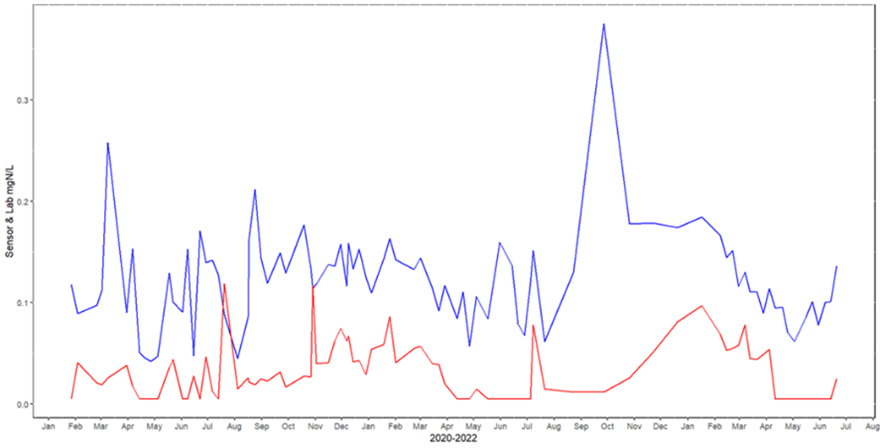Paper Authors and Title
Michelle Sherry (Dundalk Institute of Technology), Valerie McCarthy, Anu Tooher, Niamh Tester, “An investigation of the nitrate inflows into a humic lake using high-frequency monitoring data”
Abstract
Nutrient monitoring of aquatic environments is vital to determine the functionings and dynamics of the ecosystem. Traditionally, wet chemistry methods are used on grab samples to measure nitrate concentrations in aquatic environments but in recent times, the use of high frequency optical sensors has been on the rise. However, it has been noted that several factors, e.g. turbidity and coloured dissolved organic matter (CDOM), have interfered with these sensors causing higher, false nitrate readings. In this study, SUNAV2’s ability to read nitrate in a humic environment was tested by comparing sensor nitrate readings to grab sample nitrate readings to determine if there was a relationship between the two. Results showed a significant positive between the two nitrate readings (p<0.05) (correlation coefficient = 0.43). This indicates that the sensor is effective at reading nitrate in a humic environment. Further tests on the sensor determined that CDOM in the environment interfered with the sensor (p<0.05) (correlation coefficient = 0.34), causing higher nitrate readings than what is actually present. Additionally, this study concluded that turbidity had little effect on the sensor and its nitrate readings (p<0.05) (correlation coefficient = 0.08). These findings indicate that, in future, the SUNAV2 may act as a reliable replacement for traditional nitrate measuring methods but the data will require post-processing work to correct the interference with CDOM.
Figure 1. The blue line represents SUNAV2’s nitrate readings and the red line represents grab sample nitrate data. While the sensor displays higher nitrate readings, there is a similar pattern between the two.
Poster
Download and view Michelle Sherry’s poster.

